Understanding the ins and outs of autism treatment brings us to an important realization: consistency isn’t just helpful; it’s absolutely vital. As families journey through the complexities of autism, establishing structured routines and tailored interventions can truly make a difference in their children’s lives. But here’s the question: how can caregivers and therapists nurture this consistency while addressing each child’s unique needs?
In this article, we’ll explore ten impactful ways that consistency can change the game in autism treatment. We’ll share insights and strategies that empower families on their journey. Let’s dive in together!
At Rori Care, we believe in a personalized approach to ABA therapy that truly meets each individual where they are. We know that every child has unique needs, and that’s why our qualified behavior analysts take the time to conduct thorough evaluations. By using data-driven insights, we can create tailored interventions that resonate with each child’s specific challenges and strengths. This personalized care not only builds a deeper connection between the therapist and the young person but also emphasizes the importance of consistency and its role in improving autism treatment results. After all, strategies designed just for them can make all the difference!
We set clear, measurable goals for behavior change and skill development, giving parents transparent benchmarks to track progress. For instance, if a child responds well to visual aids, we’ll make sure to incorporate those into their care plan. This way, the methods we use are both familiar and effective. Plus, our ongoing evaluation and modification process means we can adapt treatment plans based on progress reports and caregiver involvement. This promotes consistency and its role in improving autism treatment results in both learning and behavior modification, which is so important!
Our evidence-driven approach highlights the significance of early intensive behavioral intervention (EIBI) in enhancing learning, verbal, and social abilities for individuals with developmental disorders. Let’s explore this together! We’re here to help you every step of the way!
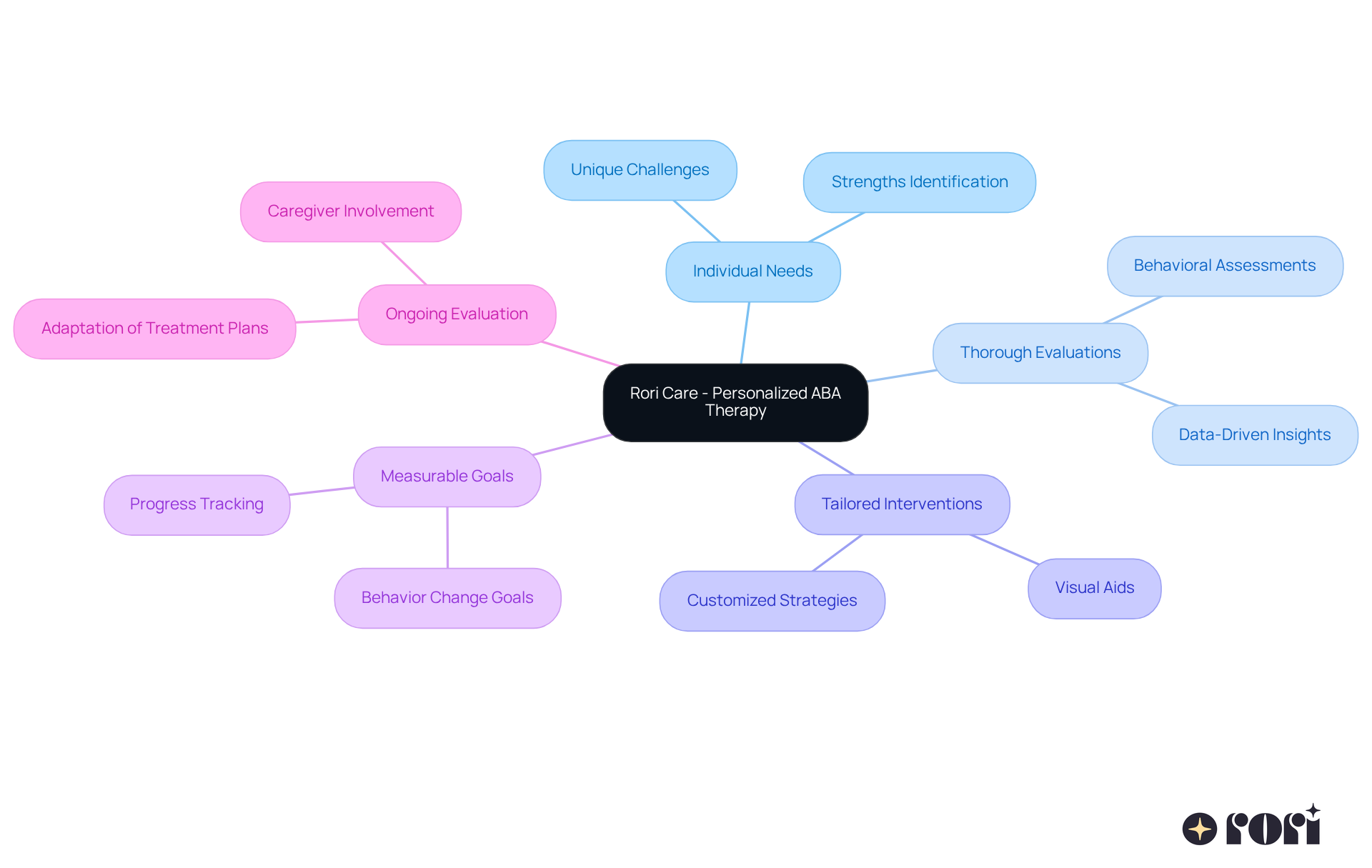
For kids with autism, consistency and its role in improving autism treatment results through daily routines is incredibly important. They help create a predictable environment, which can really ease anxiety and confusion. When things are predictable, kids can focus better on learning and reaching their goals.
For instance, think about a well-organized morning routine. Simple tasks like brushing teeth, having breakfast, and getting ready for school can help kids know what’s coming next. This makes it easier for them to transition between activities. Studies even show that having routines can boost social-emotional well-being by 47% as kids grow up!
Plus, sticking to routines reinforces the skills learned in therapy sessions, emphasizing consistency and its role in improving autism treatment results. Psychologists point out that routines give kids a chance to watch and learn problem-solving skills from their parents. This not only builds self-confidence but also helps with emotional regulation.
By prioritizing structured routines, families can create a nurturing environment that supports their child's growth and happiness. Let’s explore this together and see how we can make daily life a little smoother!

Active caregiver involvement is so important for making autism treatment effective! When families get involved in the treatment process, they help reinforce the skills learned during therapy sessions. This makes it easier for kids to transition between therapy and home. For instance, parents can use communication strategies or behavioral techniques during everyday activities, ensuring that those valuable lessons stick.
This teamwork not only enhances the educational experience for the child but also strengthens family bonds, making them key partners in the therapeutic journey. Plus, when caregivers are educated about ABA principles and strategies, they can make informed decisions that positively impact their child's progress. Research shows that when parents are involved, kids with autism spectrum disorder (ASD) can make significant developmental gains. Studies reveal that active participation can really boost communication and social skills!
Behavioral therapists often highlight that engaged caregivers lead to more effective interventions, creating a supportive environment that encourages growth and learning. Celebrating small achievements can motivate kids and reinforce positive behaviors, helping them progress even further. Setting achievable goals for a child's development is also crucial for effective therapy. By keeping those lines of communication open with therapists, families can ensure that consistency and its role in improving autism treatment results is a key part of successful intervention. This active involvement and support ultimately lead to better behavioral outcomes for young individuals.
Let’s explore this together! We’re here to help you every step of the way!

Data collection is such an important part of effective autism treatment! It helps clinicians keep track of progress and make smart adjustments to therapy plans. By gathering information on a young person's behaviors and how they respond to different interventions, therapists can spot patterns and identify areas that might need a little extra attention.
For example, if a young learner is having a tough time with a specific skill, the data can show whether the current approach is working or if it’s time to try something new. This ongoing evaluation not only maintains consistency and its role in improving autism treatment results but also ensures it meets the individual’s changing needs.
Research shows that regularly using data can lead to better cognitive and social functioning for individuals with Autism Spectrum Disorder (ASD). Plus, as Yitz Diena highlights, data is key in Applied Behavior Analysis (ABA). It helps evaluate how effective interventions are and track individual progress.
Ultimately, these data-driven adjustments can really boost therapy results, emphasizing the significance of consistency and its role in improving autism treatment results, paving the way for a more personalized and adaptable approach to each person’s unique journey. Let’s explore this together!
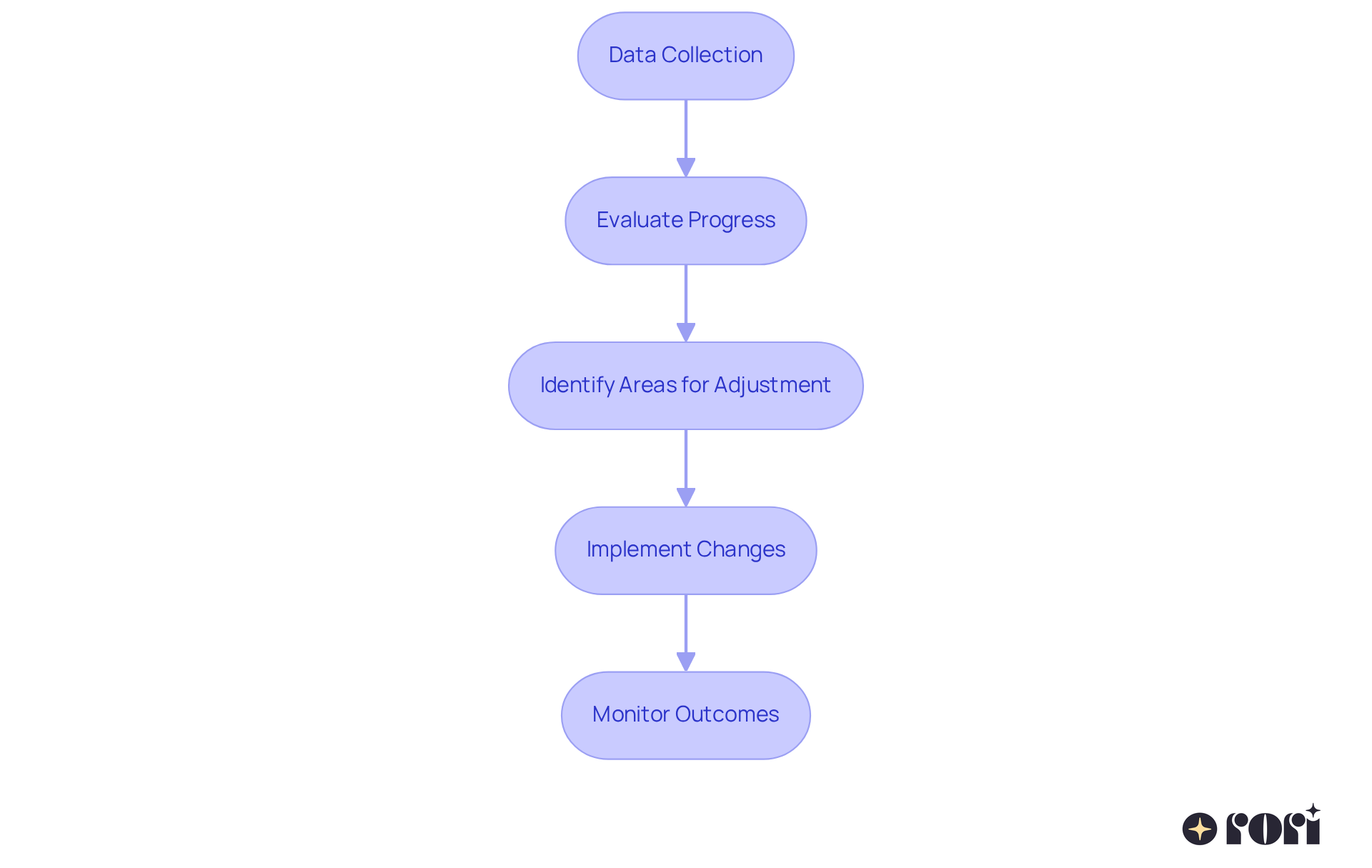
Using technology, especially AI solutions, can really boost the consistency of autism treatment. At Rori Care, we believe in customized planning that ensures each behavioral plan is tailored to meet the unique needs of your loved one, providing personalized support. Imagine AI analyzing data from therapy sessions to pinpoint effective strategies and suggest interventions that fit each individual’s strengths and challenges.
For instance, AI-driven apps can give real-time feedback to therapists, helping them adjust their approaches based on how the young person responds. This tech integration not only makes the care process smoother but also emphasizes the significance of consistency and its role in improving autism treatment results, leading to better outcomes for kids with developmental disorders. Plus, our measurable goals offer a clear benchmark for progress, while evidence-based strategies from qualified behavior analysts guarantee the use of the most effective methods for behavior change.
Did you know that studies show AI-assisted tools like Canvas Dx have a Negative Predictive Value (NPV) of 97.56% and a Positive Predictive Value (PPV) of 92.44%? That really highlights their effectiveness in early diagnosis and intervention! And think about this: the potential cost savings from earlier diagnosis and care initiation could exceed $23.8 billion each year. That’s a significant economic advantage of bringing AI into developmental disorder management.
As we embrace these advancements, it’s essential to think about the ethical implications and regulatory standards surrounding AI in healthcare. We want to ensure these technologies are used responsibly and comply with HIPAA regulations, including our policies on data anonymization and deletion requests.
Lastly, the continuous assessment and adjustment of care plans are crucial, as consistency and its role in improving autism treatment results help meet each individual’s changing needs, ensuring the highest quality of support. Let’s explore this together! We’re here to help you every step of the way!

Managing behavioral challenges can feel overwhelming, but it is essential for understanding consistency and its role in improving autism treatment results. Think about it: when we use strategies like positive reinforcement, set clear expectations, and keep consequences steady, we can really help reduce those disruptive behaviors. For example, if a young person is having a tough time during a session, therapists can respond in a structured way that not only encourages the good behaviors but also addresses the challenging ones.
By applying these strategies with consistency and its role in improving autism treatment results, caregivers and therapists can create a stable environment that truly supports a child’s learning and growth. Behavior analysts often remind us that consistency and its role in improving autism treatment results, particularly during tough moments, is key to achieving long-term success in treatment. This approach not only helps with immediate behavioral goals but also boosts the overall effectiveness of interventions for individuals on the spectrum.
Let’s explore this together! We’re here to help you every step of the way!

Creating individualized treatment plans is so important for making autism therapy as effective as possible. Every child has their own unique strengths, challenges, and preferences, and it’s crucial to consider these when designing their treatment. For example, kids who learn better with visuals can really benefit from using visual aids. This not only boosts their engagement but also helps them retain information better.
Research shows that when interventions are tailored to each child, the learning outcomes improve significantly. Those who receive personalized support often make remarkable progress in their cognitive and adaptive skills. By aligning treatment with what each child specifically needs, therapists can help create consistency and its role in improving autism treatment results in both learning and behavior. This ultimately leads to more successful and lasting outcomes.
Clinicians emphasize that understanding the complexities of these interventions empowers parents and caregivers to make informed choices. It really highlights how vital personalization is in achieving the best results in treatment. So, let’s explore this together! We’re here to help you every step of the way!
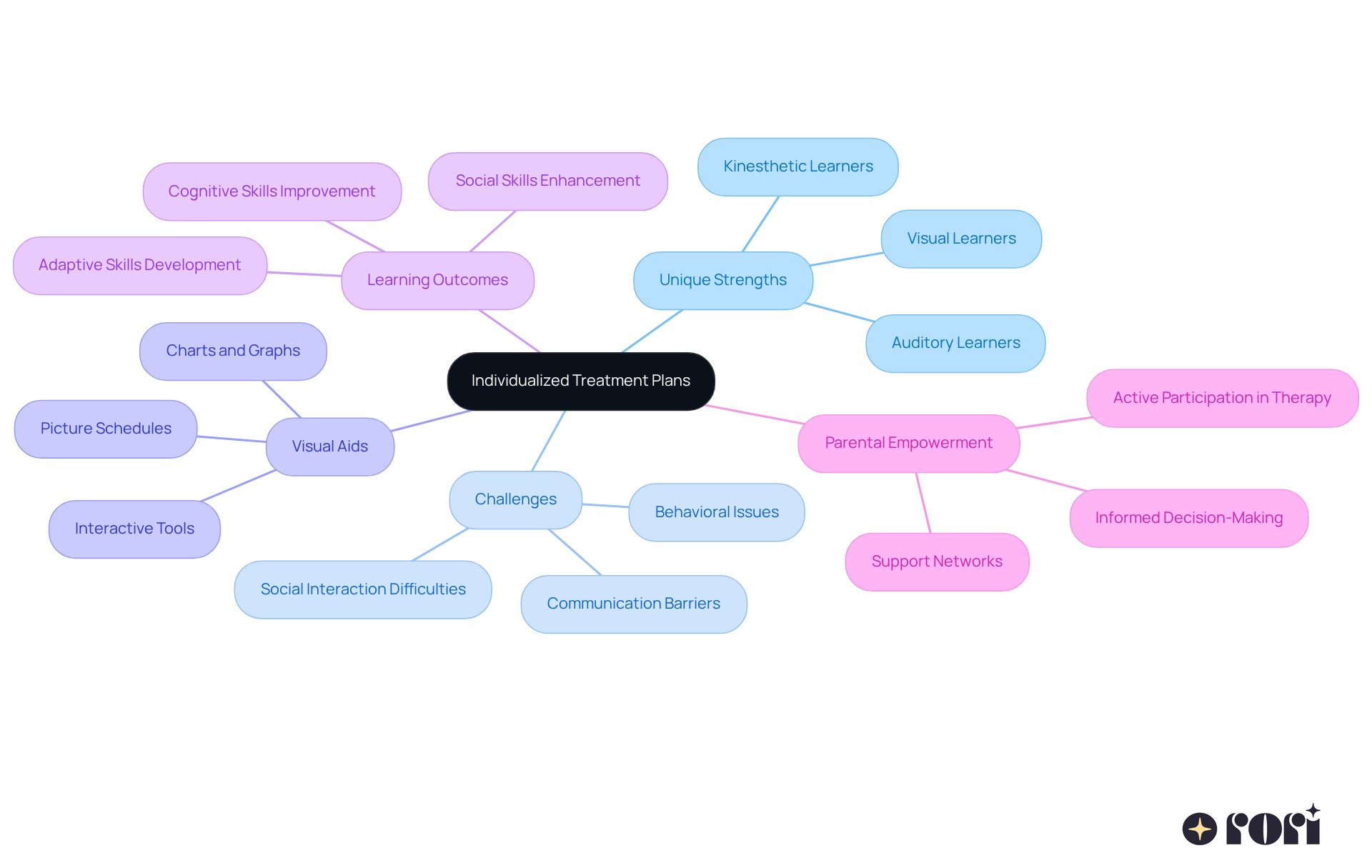
Incorporating physical activity into autism treatment can really make a difference! 🌟 Regular exercise has been shown to lift moods, ease anxiety, and boost cognitive skills. This can help young people engage more fully in their treatment. For instance, taking short physical activity breaks during therapy sessions can help kids refocus and remember information better.
By encouraging a healthy lifestyle that includes physical activity, caregivers can create a supportive environment for learning and growth. This approach aligns perfectly with Applied Behavior Analysis (ABA), which focuses on tailoring treatment to meet each individual’s unique needs. Active involvement from caregivers is key! It not only enhances professional support but also empowers caregivers with the tools they need to help their loved ones achieve their behavioral goals.
When caregivers understand ABA principles, they can make informed choices that boost their child’s progress. This ultimately leads to better behavioral outcomes, emphasizing the significance of consistency and its role in improving autism treatment results. So, let’s explore this together! We’re here to help you every step of the way!
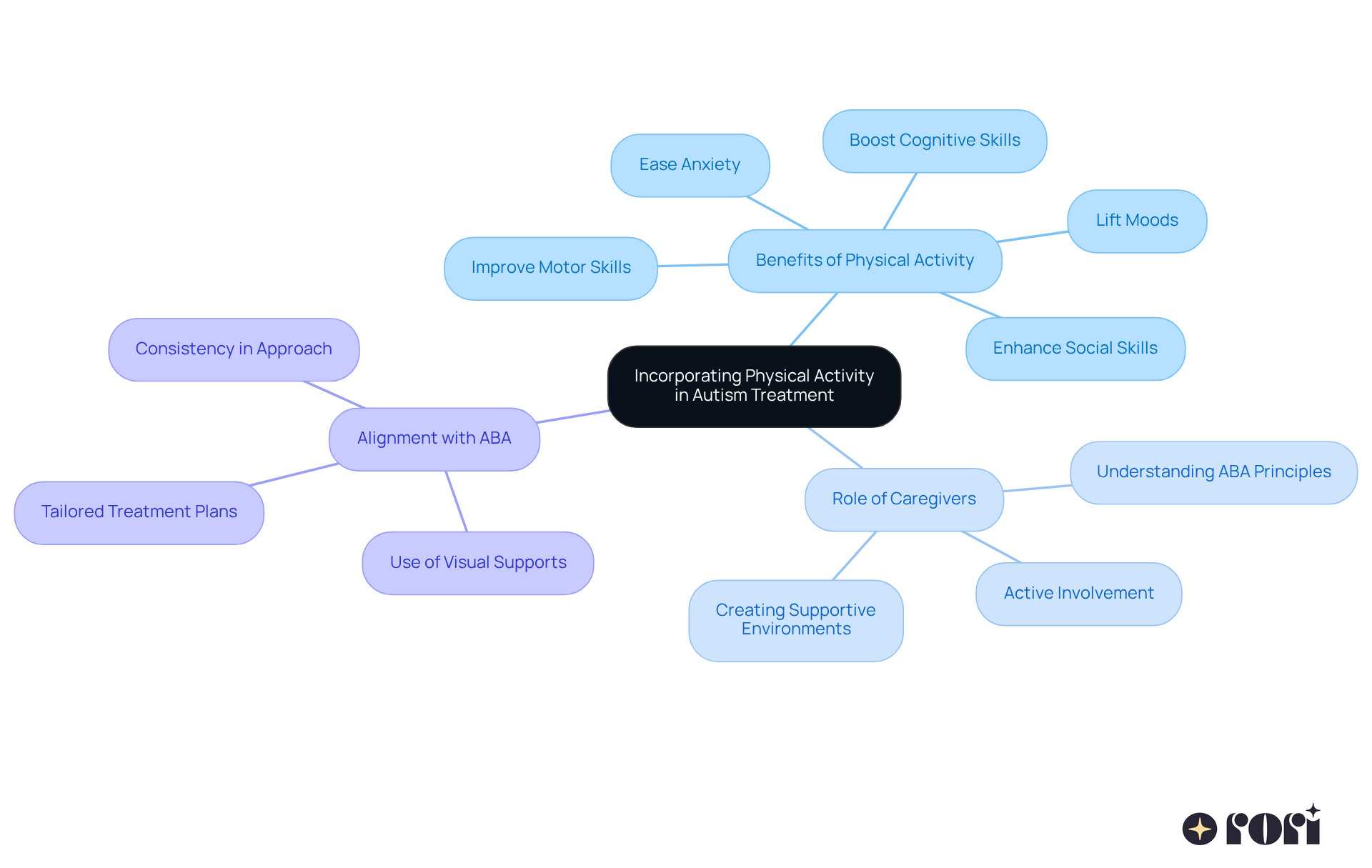
Visual aids are essential in establishing consistency and its role in improving autism treatment results, especially in relation to Applied Behavior Analysis (ABA) methods. Think about tools like schedules, charts, and pictograms - they really help kids understand what to expect and what’s expected of them. For instance, a visual schedule that lays out daily activities not only brings structure but also helps ease anxiety, making transitions a lot smoother.
Research shows that using visual aids can lead to fewer challenging behaviors and more on-task engagement during learning activities. This is especially true when caregivers are actively involved and the recommended support hours are followed. By consistently using visual aids at home, school, and during therapy, caregivers and therapists can really reinforce learning and behavioral expectations. This approach creates a reliable environment, which is key for achieving consistency and its role in improving autism treatment results.
What’s great about ABA therapy is that it can be tailored to fit each individual’s unique needs, making it a personalized treatment option. Educators have noticed that visual strategies are incredibly helpful for promoting independence and improving communication, especially for young people with limited verbal skills. One teacher shared, "Visual schedules are essential resources for children on the spectrum because they ensure consistency and its role in improving autism treatment results in everyday activities." This really highlights how impactful visual aids can be in ABA, underscoring the importance of consistency and its role in improving autism treatment results for achieving effective and consistent outcomes.
And let’s not forget, ABA therapy is the only scientifically validated approach for developmental disorders that insurance covers, which makes it more accessible for families. So, if you’re navigating this journey, remember that you’re not alone - let’s explore this together!
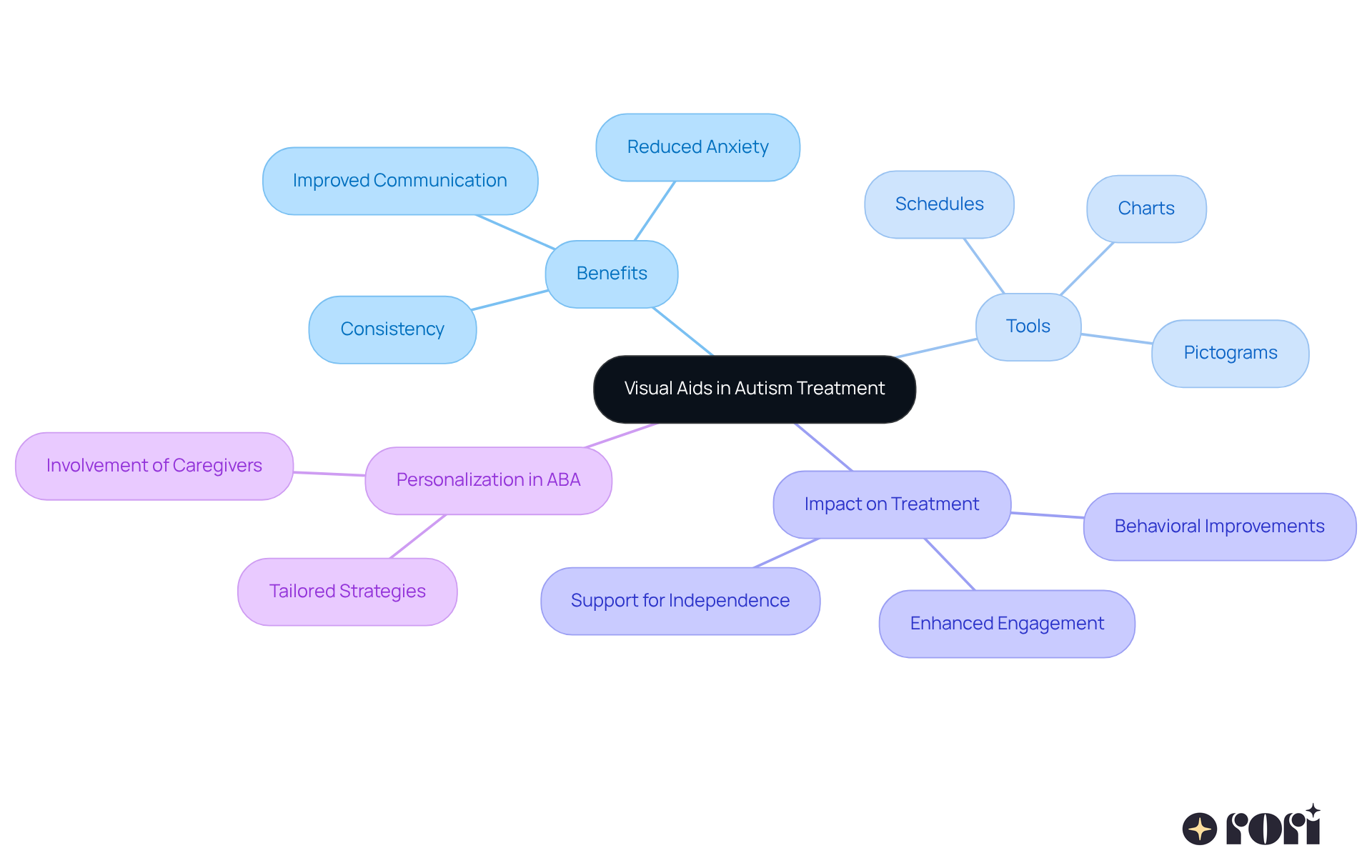
Monitoring intervention fidelity is super important for ensuring consistency and its role in improving autism treatment results. Think of it like this: regular check-ins help us confirm that the strategies laid out in the care plan are being followed just as we intended. For example, therapists can use handy fidelity checklists and data tracking tools to see how well they’re sticking to the prescribed methods.
Research shows that consistency and its role in improving autism treatment results, essentially adhering to treatment protocols, really correlates with positive outcomes. This means kids can pick up new skills and improve their behavior more effectively. By ensuring that interventions are consistently implemented, clinicians can highlight consistency and its role in improving autism treatment results, providing the reliable support that helps children truly thrive.
And it doesn’t stop there! Regular feedback and monitoring not only reinforce the right way to implement these strategies but also allow for timely adjustments. This way, we can enhance the overall effectiveness of the therapy. So, let’s explore this together and see how we can make a difference!
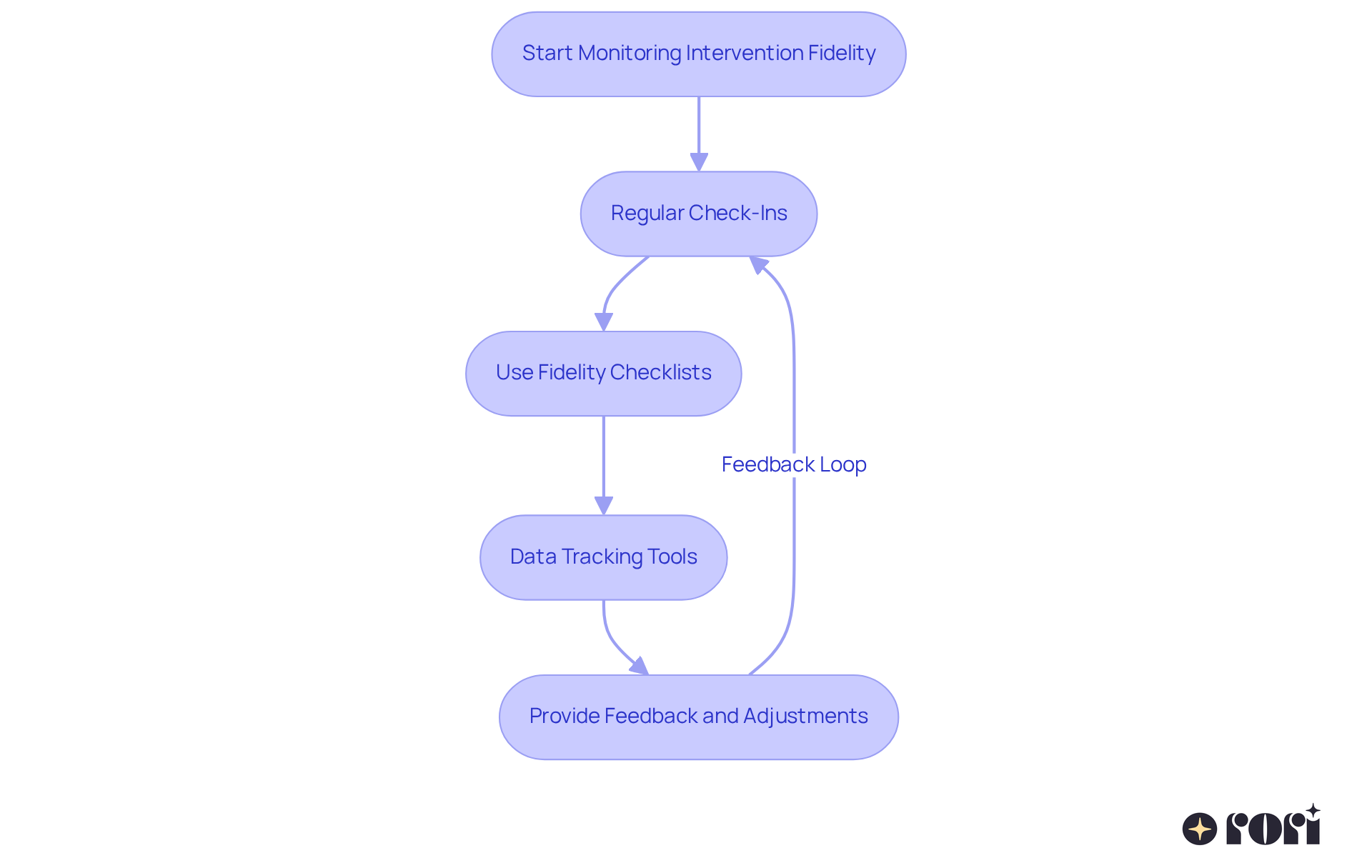
When it comes to autism treatment, consistency is key! Establishing structured routines, engaging caregivers, and using data-driven approaches can really make a difference in treatment outcomes. Just think about how a personalized approach, like what Rori Care offers, can meet each child's unique needs, creating a space where they can truly thrive.
One of the big takeaways from the article is how daily routines can help reduce anxiety and boost focus. Plus, family participation plays a critical role in reinforcing the skills that kids learn. And let’s not forget about the importance of ongoing data collection to adapt treatment plans effectively! Incorporating technology and visual aids can also enrich the therapeutic experience while supporting the development of essential life skills.
Ultimately, the journey of autism treatment isn’t just about tackling behavioral challenges; it’s about creating a consistent and nurturing environment. By embracing these strategies, families and caregivers can make a significant impact on their child's growth, fostering resilience and independence. Remember, the commitment to consistency is crucial - it lays the groundwork for meaningful progress and positive outcomes in autism therapy.
So, let’s explore this together! Your involvement can truly make a difference!
What is the approach of Rori Care towards ABA therapy?
Rori Care believes in a personalized approach to ABA therapy, conducting thorough evaluations to create tailored interventions that meet each child's unique needs, challenges, and strengths.
How does Rori Care ensure consistency in autism treatment?
Rori Care emphasizes the importance of consistency by setting clear, measurable goals for behavior change and skill development, adapting treatment plans based on ongoing evaluations and caregiver involvement.
What role do routines play in autism treatment?
Routines create a predictable environment that eases anxiety and confusion for kids with autism, helping them focus better on learning and reinforcing skills learned in therapy.
How can caregivers enhance the effectiveness of autism treatment?
Active caregiver involvement reinforces skills learned during therapy, helps in transitioning between therapy and home, and strengthens family bonds, leading to better developmental gains for children.
What are the benefits of engaging caregivers in the treatment process?
Engaged caregivers can use communication strategies and behavioral techniques in daily activities, which enhances the educational experience and supports their child's progress.
How does Rori Care measure progress in therapy?
Rori Care sets transparent benchmarks for progress tracking and modifies treatment plans based on progress reports and caregiver input to ensure effective interventions.
What is the significance of early intensive behavioral intervention (EIBI)?
EIBI is highlighted as crucial for enhancing learning, verbal, and social abilities in individuals with developmental disorders, emphasizing the need for early intervention.
How do structured routines contribute to emotional regulation in children with autism?
Structured routines provide opportunities for children to observe and learn problem-solving skills, which builds self-confidence and aids in emotional regulation.